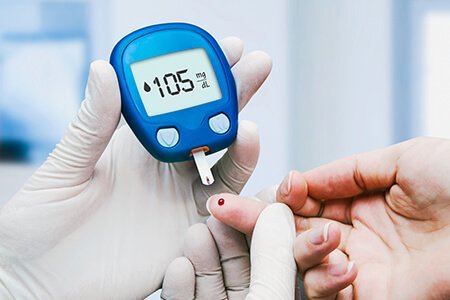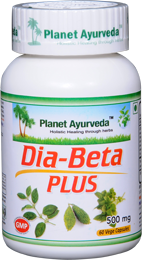
Overview
In rare cases, if antidiabetic drugs fail (i.e., the clinical benefit stops), insulin therapy may be necessary-usually in addition to oral medication therapy-to maintain normal or near normal glucose levels.
The initial insulin regimen is often chosen based on the patient’s blood glucose profile. Initially, adding nightly insulin to patients failing oral medications may be best.
Nightly insulin combines better with metformin than with sulfonylureas. The initial dose of nightly insulin (measured in IU/d) should be equal to the fasting blood glucose level. If the fasting glucose is reported in mg/dl, multiply by 0.05551 to convert to mmol/L.
When nightly insulin is insufficient, choices include:
- Premixed insulin with a fixed ratio of short and intermediate acting insulin; this tends to be more effective than long acting insulin, but is associated with increased hypoglycaemia. Initial total daily dosage of biphasic insulin can be 10 units if the fasting plasma glucose values are less than 180 mg/dl or 12 units when the fasting plasma glucose is above 180 mg/dl. A guide to titrating fixed ratio insulin is available.
- Long acting insulins such as insulin glargine and insulin detemir. A meta-analysis of randomized controlled trials by the Cochrane Collaboration found “only a minor clinical benefit of treatment with long-acting insulin analogues for patients with diabetes mellitus type 2. More recently, a randomized controlled trial found that although long acting insulins were less effective, they were associated with reduced hypoglycaemic episodes.
- Insulin Pump therapy in Type 2 diabetes is gradually becoming popular. In an original published study, in addition to reduction of blood sugars, there is evidence of profound benefits in resistant neuropathic pain and also improvements in sexual performance.
Gastric Bypass Surgery
Gastric Bypass procedures are currently considered an elective procedure with no universally accepted algorithm to decide who should have the surgery. In the diabetic patient, certain types result in 99-100% prevention of insulin resistance and 80-90% clinical resolution or remission of type 2 diabetes. In 1991, the NIH (National Institutes of Health) Consensus Development Conference on Gastrointestinal Surgery for Obesity proposed that the body mass index (BMI) threshold to consider surgery should drop from 40 to 35 in the appropriate patient. More recently, the American Society for Bariatric Surgery (ASBS) and the ASBS Foundation suggested that the BMI threshold be lowered to 30 in the presence of severe co-morbidities. Debate has flourished about the role of gastric bypass surgery in type 2 diabetics since the publication of The Swedish Obese Subjects Study. The largest prospective series showed a large decrease in the occurrence of type 2 diabetes in the post-gastric bypass patient at both 2 years (odds ratio was 0.14) and at 10 years (odds ratio was 0.25).
A study of 20-years of Greenville (US) gastric bypass patients found that 80% of those with type2 diabetes before surgery no longer required insulin or oral agents to maintain normal glucose levels. Weight loss occurred rapidly in many people in the study who had had the surgery. The 20% who did not respond to bypass surgery were, typically, those who were older and had had diabetes for over 20 years.
In January 2008, The Journal of the American Medical Association (JAMA) published the first randomized controlled trial comparing the efficacy of laparoscopic adjustable gastric banding against conventional medical therapy in the obese patient with type2 diabetes. Laparoscopic Adjustable Gastric Banding results in remission of type2 diabetes among affected patients diagnosed within the previous two years according to a randomized controlled trial. The relative risk reduction was 69.0%. For patients at similar risk to those in this study (87.0% had type 2), this leads to an absolute risk reduction of 60%. 1.7 patients must be treated for one to benefit (number needed to treat = 1.7). These results have not yet produced a clinical standard for surgical treatment of Type 2 patients, as the mechanism, if any, is currently obscure. Surgical care of Type 2 diabetes must be, as a result, considered currently experimental.
Effective Herbal Remedy for Sugar Control
This herbal blend called Dia-beta plus is going to work slowly. Dia-beta plus is not going to lower down sugar immediately or cause hypoglycemia. The effects are slow but sustained and can be monitored. Over the period of time, You may need to reduce the dosage of your other drugs, supplements or herbs for diabetes being used.
Dia-beta plus is a mixture of various herbs for diabetes, which are described in Ayurveda for taking care of diabetes naturally. The herbs not only help to control sugar levels but also help to rejuvenate overall health, bring back stamina and help to overcome fatigue. Dia-beta plus contains herbs like momordica, Gymnema, Salacia, Pterocarpus marsupium which are long know to have beneficial effects in diabetes.The herbs are not only good to control sugar levels but also excellent for preventing diabetic neuropathy.
Dia-Beta Plus
This product has its roots in Ayurveda-ancient herbal healthcare system of India . According to Ayurveda the balance of 3 energies- Vata, Pitta and Kapha (Kinetic, Thermal and Potential energy) in the body is a disease free state whereas their imbalance causes diseases. In Ayurveda, imbalance in “Vata” and “Kapha” is considered as root cause of diabetes. Herbs in this formula control both “Vata” and “Kapha” and thus good in controlling sugar levels.
Herbs in Dia-beta Plus
Dia-beta Plus is purely a herbal formulation without any chemicals added into it. The ingredients are frequently used in Ayurvedic system of medicine since 5,000 B.C. without any side effects. Although there are many herbal products for diabetes, but this one is unique in bringing down sugar levels under control without causing side effects and without causing sharp fluctuation in sugar levels.
Ingredients of Dia-Beta Plus
| S. No. | Herb Used | Latin Name | Quantity |
| 1. | Gurmaar | Gymnema sylvestrae | 150 mg |
| 2 | Karela | Momordica charantia | 150 mg |
| 3. | Saptrangi | Salacia oblonga | 50 mg |
| 4. | Vizaysaar | Pterocarpus marsupium | 50 mg |
| 5. | Ashwagandha | Withania somnifera | 50 mg |
| 6. | Tulsi | Ocimum tenuiflorum | 50 mg |
Ingredients of Dia-beta Plus
1. Gurmaar (Gymnema sylvestrae)
In Hindi language, Gurmaar means “The sugar killer”. It is a twine which is known since ages in Ayurveda for its sugar controlling activity. Recent studies show that it contains Gymnemic acid molecules responsible for its anti-diabetic action. They bind with glucose molecules in the intestines and inhibit their entry into the blood stream. Thus it is effective in controlling sugar levels. This is a perfect herb for sugar control.
2. Karela (Momordica charantia)
Commonly known as bitter gourd. It is very popular for it’s anti-diabetic properties. It’s also rich in micronutrients which are required for prevention of complications of diabetes. We have a juice form of momordica herb as well. Read more about our product Karela Saar The products like Diabeta plus, Karela Saar, Ashwagandha, Shilajit can all be used together to combat diabetes with herbal remedies.
3. Vizaysaar (Pterocarpus marsupium)
Vizaysaar is a big tree whose bark is very useful for diabetes. The bark of the tree is made into a wooden glass and the glass is termed as “The miracle care for diabetes”. Some water is kept in the wooden glass overnight and is consumed early morning by diabetes patients. The color of the water changes to brown and glass is changed after around 1 month when the water color does not change. Diabeta Plus contains extract of bark of this miracle tree.
4. Saptrangi (Salacia oblonga)
Salacia oblonga is a wonderful remedy for diabetes. It is also a tree whose bark is effective in controlling diabetes. It is extensively studied in the western herbal schools now a days, but in Ayurveda it is being used since ages.
Dosage
For Non Insulin Dependent – 2 capsules twice daily, 1/2 hour before meals, with water.
For Insulin Dependent – 4 – 6 capsules twice daily, 1/2 hour before meals, with water.
To buy Dia-beta Plus, please visit store.planetayurveda.com/products/dia-beta-plus
Other Supplements Good to be used with Diabeta Plus
Ashwagandha (Withania somnifera)
Ashwagandha is adaptogenic, relieves anxiety and stress. It is also an effective anti-inflammatory. Ashwagandha is a useful herb especially for diabetic neuropathy, weakness, fatigue and weight loss due to diabetes. It improves overall well being.
Tulsi (Ocimum sanctum)
It is popularly known as ‘The Holy Basil’ is a sacred plant according to Hindu mythology. People in India worship this plant as it has tremendous medicinal properties. Regular use of leaves of this plant controls blood sugar levels very effectively. It is also useful in many types of cancers, viral and bacterial infections, sore throat, cough and cold etc.
Diabeta Plus capsule contains effective Herbs for Diabetes control. It Controls Sugar Levels Naturally. The herbs for Sugar control are without any additives or preservatives.It can be very useful as an very effective herbal treatment for Diabetes.
A very useful and effective natural treatment for Diabetic Neuropathy. Although there are a lot of Herbal Products for Diabetes, but the unique combination of various herbs in Diabeta Plus has made it a very different and a very useful herbal product for diabetes.
Diabetic Neuropathy
Ashwagandha and Shilajit Capsules are some other herbal supplements which can be used along with Dia-beta Plus to combat diabetic neuropathy. Neuropathy responds quickly to this herbal combination. Ashwagandha is used 500 mg capsules in twice daily dosage to combat Diabetic Neuropathy effectively and other complications of diabetes.

